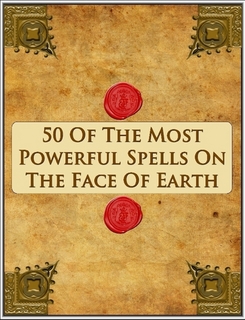Greg Crowfoot - Understanding the Galdrabok Part 2 (89.0 Kb)
 Book downloads: 676
Book downloads: 676
The Galdrabok is a collection of Icelandic grimores, or magical texts, dating from the 16th to 17th centuries. The Galdrabok presents modern-day rune magicians with a wide variety of magical designs. Among them are several versions of the famous 'AEgishjalmur', or "Helm of Awe." As a whole, the Galdrabok utilizes traditional Northern symbology combined with a western European influence (which reflects the joint effect of Old Norse and Christian-Era culture upon the history and traditions of Iceland). But the Galdrabok's desi... More >>>Book can be downloaded.
Note that, unfortunately, not all my books can be downloaded due to the restrictions of copyright. However, most of the books on this site do not have copyright restrictions. If you find any copyright violation, please contact me at  . I am very attentive to the issue of copyright and try to avoid any violations, but on the other hand to help all fans of magic to get access to information.
. I am very attentive to the issue of copyright and try to avoid any violations, but on the other hand to help all fans of magic to get access to information.
If you are having difficulty downloading books, or you are looking for a book that is not on the site (but maybe it is in my home library), please write me a email to

and I will try to help, I can send the book by e-mail
darkbooks.org began in early 2008 I am happy to donate my time to providing you this resource, I would also like to note, that, although I try, I do not always have enough time to deal with the site, including, unfortunately, I do not always have time to answer all letters, because I have to earn money for a living. If you can financially help me, it would free me from the worries of earning money for living, perhaps partially, but ideally completely, then all 100% of my time could be devoted to the site. Also I do pay monthly web server/files storage and hosting costs to keep this site on the air. Please consider making a donation to help me continue this activity and devote more time to it or at least offset the cost of paying for storage/hosting. Even a small contribution helps!
The Galdrabok is a collection of Icelandic grimores, or magical texts, dating from the 16th to 17th centuries. The Galdrabok presents modern-day rune magicians with a wide variety of magical designs. Among them are several versions of the famous 'AEgishjalmur', or "Helm of Awe." As a whole, the Galdrabok utilizes traditional Northern symbology combined with a western European influence (which reflects the joint effect of Old Norse and Christian-Era culture upon the history and traditions of Iceland). But the Galdrabok's designs go well beyond those of the traditional bind-rune formulAE we are generally familiar with. Even a passing glance at the spells of the Galdrabok will impress anyone familiar with rune-magic of their high degree of sophistication and the potential power designs like them
could have in magical operations.
Several books discuss the Galdrabok either in its entirety or in excerpts: "THE GALDRABoK" as translated by Stephen E.Flowers, and "NORTHERN MAGIC," by Edred Thorsson.
The Galdrabok (Icelandic Book of Magic) is an Icelandic grimoire dated to ca. 1600. It is a small manuscript containing a collection of 47 spells.[2] The grimoire was compiled by four different people, possibly starting in the late 16th century and going on until the mid-17th century. The first three scribes were Icelanders and the fourth was a Dane working from Icelandic material.[3] The various spells consist of Latin and runic material as well as Icelandic magical staves, invocations to Christian entities, demons and the Norse gods as well as instructions for the use of herbs and magical items. Some of the spells are protective, intended against such problems as trouble with childbearing, headache and insomnia, previous incantations, pestilence, suffering and distress at sea. Others are intended to cause fear, kill animals, find thieves, put someone to sleep, cause farting or bewitch women.
The book was first published in 1921 by Natan Lindqvist in a diplomatic edition and with a Swedish translation. An English translation was published in 1989 by Stephen Flowers and a facsimile edition with detailed commentary by Matthias Vidar Samundsson in 1992.



 Book downloads: 676
Book downloads: 676
 . I am very attentive to the issue of copyright and try to avoid any violations, but on the other hand to help all fans of magic to get access to information.
. I am very attentive to the issue of copyright and try to avoid any violations, but on the other hand to help all fans of magic to get access to information.
 and I will try to help, I can send the book by e-mail
and I will try to help, I can send the book by e-mail